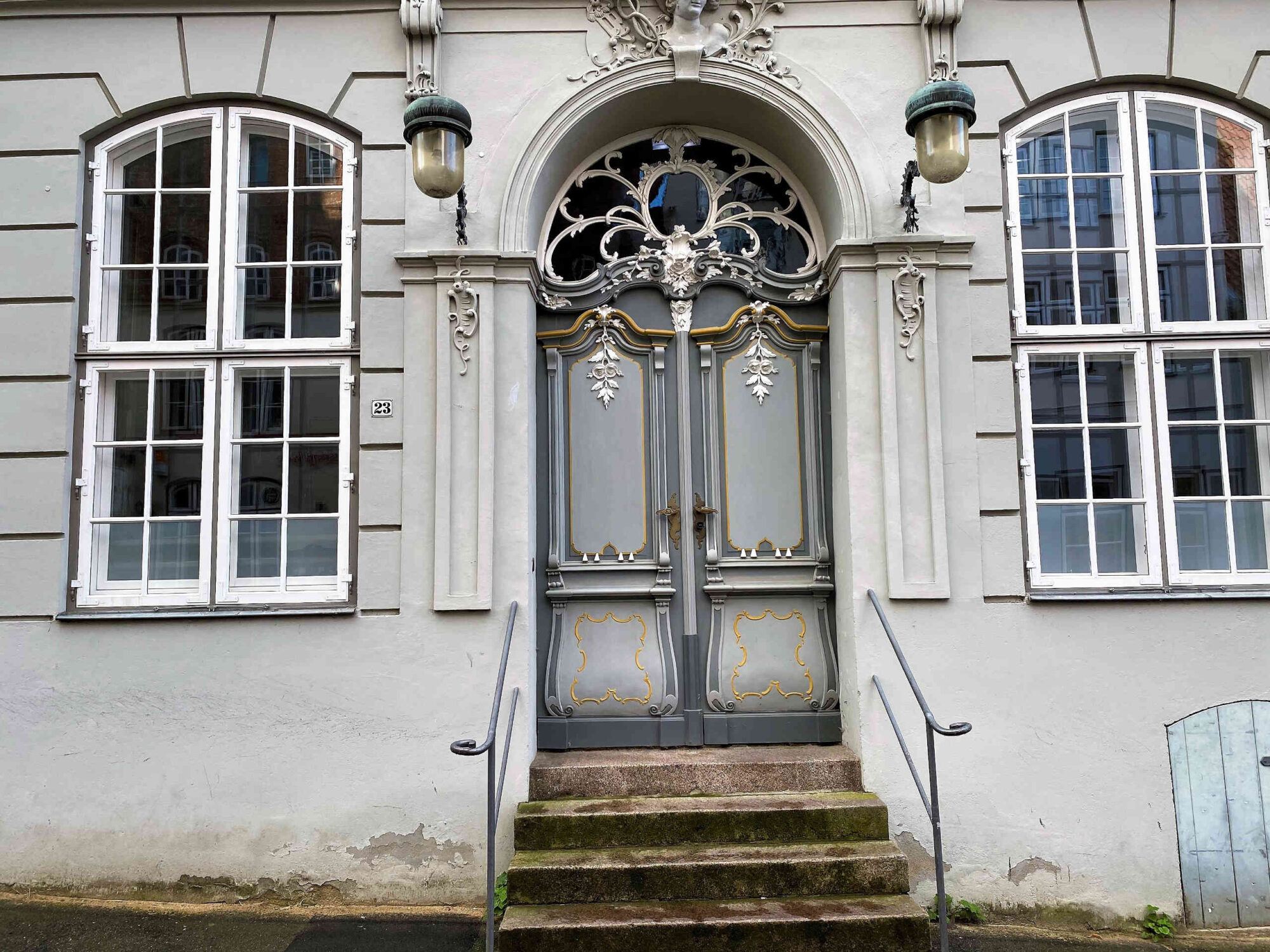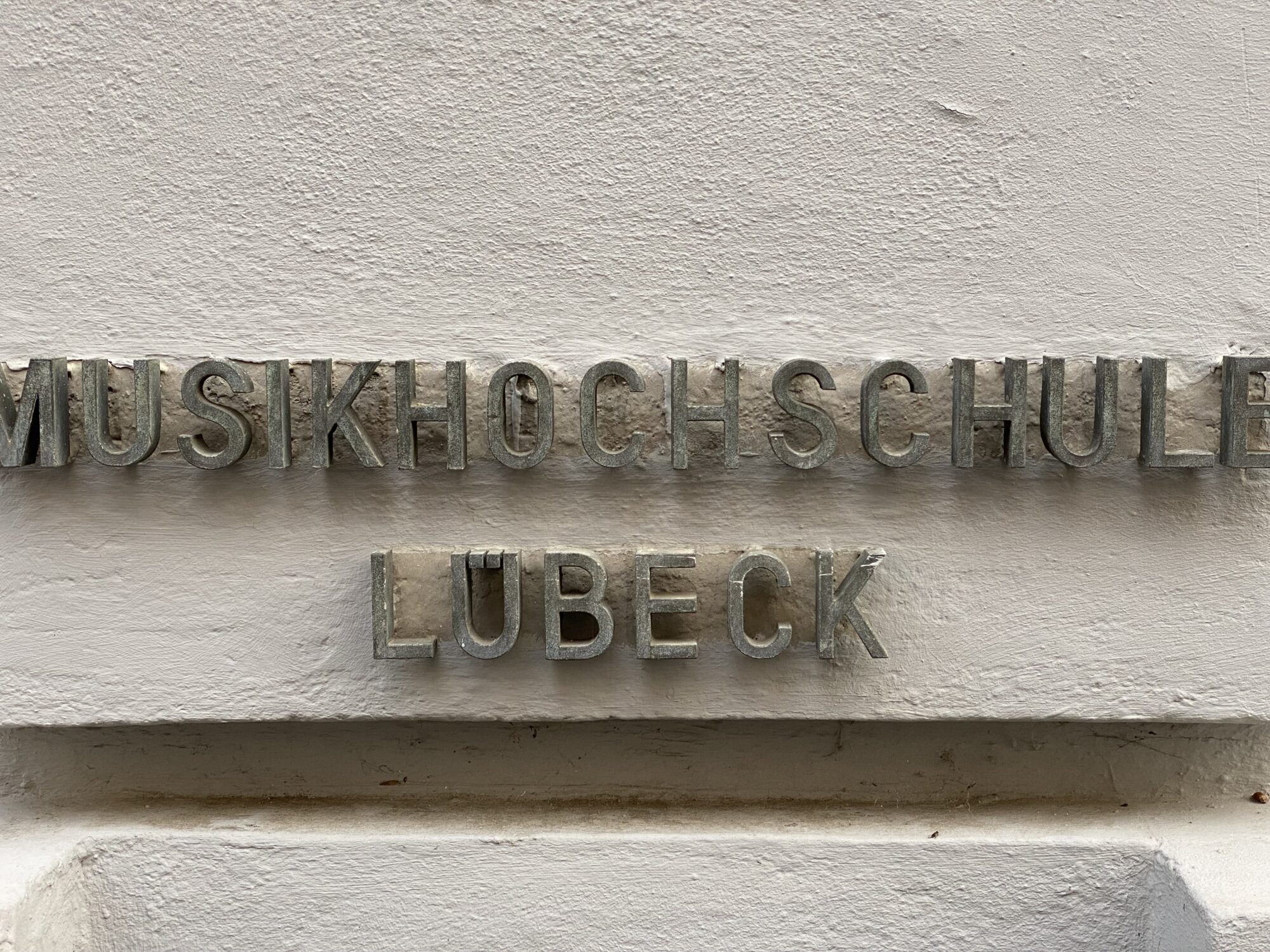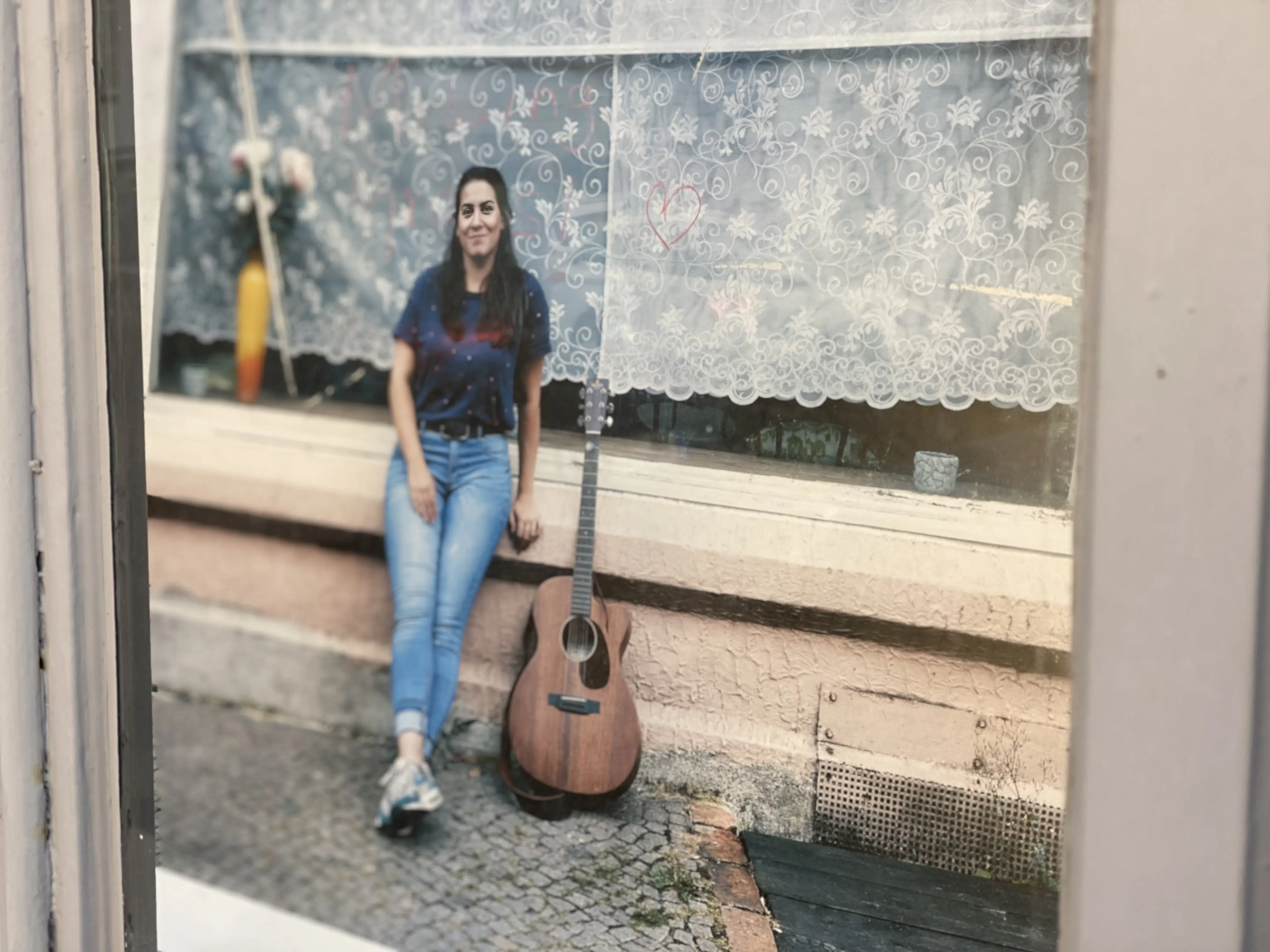Today we take a walk in a significant part of the UNESCO World Heritage Site of Lübeck’s Old Town, the Große Petersgrube. For our blog Lübeck ZWISCHENZEILEN we dive into the architectural past of the city, pay a short visit to the Lübeck Conservatory and finally take a break around the corner at the Obertrave embankment. Let’s go!
The first buildings erected in the 12th century in the Große Petersgrube Server as storage buildings. The merchants lived on their ships. Later, so-called hanging floors were built in, where the merchants’ servants lived. The restored facades of this unique street represent almost all styles that you can find in Lübeck.
Style studies for beginners
We start below St. Peter’s, which was built from 1227 as a Romanesque basilica, and follow the road towards Obertrave. You can recognize Romanesque buildings, for example, by the round arches of the windows and friezes. There are no components or buildings of this style preserved in the original in Lübeck. However, the northern facade of the Löwen pharmacy, which we recently visited, was rebuilt in Romanesque style after the Second World War. And at the Cathedral you will find the – also rebuilt – paradise. Romanesque details such as horizontal and staggered round arch friezes, rosettes and keyhole arches are well visible there.
The Gothic architectural style came to Lübeck with the merchants traveling on the trade routes through Europe. The elegant style of the Gothic cathedrals in and around Paris appealed to them exceptionally well. The upward striving lines, steep roofs, the windows with pointed arches looked light and airy. By the way, St. Mary’s is THE example of a Gothic brick church. Commissioned and financed by Lübeck merchant families. In the upper part of the Große Petersgrube there are beautiful examples of profane buildings, which have Gothic features, e.g. the house No. 7 with its ogival portal. The plank windows on the upper floor are located in stich-arched blind niches. The house No. 15 has a Gothic gable. You can also see such a stepped gable further down the street at house no. 25. It’s a former plank house with a facade with red and black-glazed bricks, where you can discover Gothic pointed arches. Because lots in Lübeck were usually deep rather than wide, builders had only the narrow facade facing the street to show off wealth and their sense of modern trends. If you look behind the facade, you will notice that behind the upper windows there are often no rooms at all. Sometimes even in those days people liked to show off. By the way, the Gothic period lasted from about 1220–1500.

The Renaissance style, which followed the Gothic, is recognizable in the buildings No. 4 and No. 10. Typical of this period were horizontal divisions, round arches, obelisks and volutes. The Renaissance period lasted from 1500-1650 approximately.

In the Baroque and Rococo periods between 1650 and 1770, straight lines virtually disappeared. Everywhere rich ornaments and a lot of stucco. House No. 9 belongs to the Baroque style, which played a role in Lübeck for only about 50 years. Characteristic are the tail gables and the round-arched sandstone portal. Late rococo is represented by the houses No 21 and 23. The main entrance to the University of Music Lübeck is located in house no. 21. The building is Lübeck’s only completely preserved upper middle-class house from the late rococo period. It was built in 1776 and now has a construction floor to prevent the houses from sliding towards the Trave river.

Finally, in Classicism (1750-1850), after all the pomp, people longed to return to clear and austere forms and took antiquity as a model again. Examples are the houses No. 12, 13, 17 – 19, 27 and 29. The house No. 19 houses Lübeck’s only completely preserved empire style hallway. The two bronze lions that today lie in front of the Holsten Gate originally belonged to this building.

The University of Music Lübeck
The University of Music Lübeck occupies a large part of the historic buildings in Große Petersgrube. A total of 22 houses were rebuilt within 15 years and united to form a new building complex. In 1984, during the demolition of the house An der Obertrave 16, the famous Lübeck coin hoard Was discovered. The approximately 24,000 coins had been hidden in a cavity under the covered floor, packed in linen bags, in a simple wooden box between 1533 and 1537. 23,228 silver and 395 gold coins were recovered, which allowed conclusions to be drawn about the flow of goods and trade of the Lübeck merchants.




Romeo & Juliet of Engelsgrube
My favorite gem in Große Petersgrube is the door grille of house No. 19, where Romeo and Juliet have been hiding for a good 150 years, smiling quietly at each other. Romeo with a contemporary headdress, Juliet with her eyes closed. Above the heads you can see two birds and a pineapple. The birds symbolize love, prosperity. Luxury is represented by the pineapple. It is said to bring good luck to stroke Theo lovers heads.


Break at the Obertrave
That was a firework of info and it’s time for a break. You have a whole range of options at the Obertrave to have a good time. For example in the Kartoffelspeicher at Obertrave 6, where you can have a whole range of toppings added to your potatoe. Whether vegan, vegetarian or with meat, the choice is vast. Here your individual wishes are fulfilled. A traditional address is the restaurant Yachtzimmer of Hotel Jensen at Obertrave 4-5. The fish dishes are highly recommended. For a “Rotti” – the specialty of the house – or a coffee speciality you are invited to the Blaupause Cafébar at Obertrave 12 . Whatever you decide: the view of the water of the Trave and the historic salt warehouses is magnificent. People strolling by, cello sounds from an open window of the conservatory. Sometimes music sounds from the water or someone dances tango. It hardly gets any better than this.

